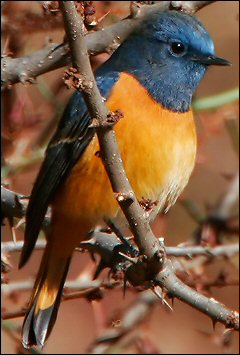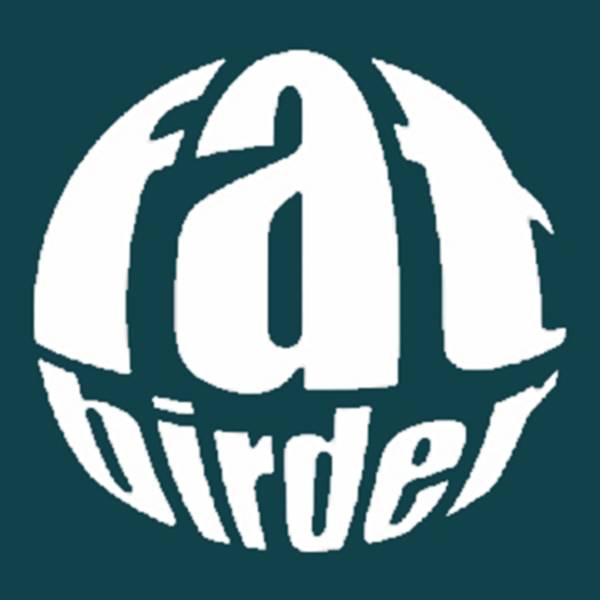Tibet (Xizang) Autonomous Region

Birding Tibet
Xizang, which has as its provincial capital Lhasa, is better known to the rest of the world as Tibet. The Tibet Autonomous Region (TAR) is a province-level autonomous region of the People’s Republic of China (PRC) includes about half of historical Tibet, including the traditional provinces of Ü-Tsang and Kham (western half). Its borders coincide roughly with the actual zone of control of the government of Tibet before 1959. Tibet is the second-largest province of China by area (spanning over 470,000 sq mi/1,200,000 km2) after Xinjiang. Unlike other autonomous regions, the vast majority of inhabitants are of the local ethnicity.Tibet is under the administration of the People’s Republic of China. The Central Tibetan Administration, commonly referred to as the Tibetan Government in Exile and headed by the Dalai Lama considers this situation an illegitimate military occupation and holds that Tibet is a distinct sovereign nation with a long history of independence, though the Dalai Lama currently does not seek full independence for Tibet, but would accept an autonomous status similar to that now held by Hong Kong.The Tibet Autonomous Region is located on the Tibetan Plateau, the highest region on Earth. In northern Tibet elevations reach an average of over 4,572 metres (15,000 ft). Mount Everest lies on Xizang’s border with Nepal. Xinjiang, Qinghai and Sichuan lie to the north and east of the region; Indian states of Jammu and Kashmir and Himachal Pradesh to the west; and Myanmar, Nepal, Bhutan, and the Indian states of Uttarakhand, Sikkim, and Arunachal Pradesh to the south. Tibet also shares a short southeastern border with the PRC province of Yunnan.
-
Wikipedia
GNU Free Documentation License
http://en.wikipedia.org/wiki/Tibet_Autonomous_Region
-
Number of bird species: 912
(As at April 2020)
Number of endemics: 1
Sillem's Mountain-Finch Leucosticte sillemi
-
A Field Guide to the Birds of China
| By John MacKinnon, Karen Phillipps and David Showler | OUP | 2000 | Paperback | ISBN: 9780198549406 Buy this book from NHBS.com -
Birds of China and Tibet
| By Paul Leader, Geoff Carey, Phil Round & Tim Worfolk | Christopher Helm | 2019 | 600 pages, 120 colour plates, maps | ISBN: 9780713660326 Buy this book from NHBS.com
-
Xinjiang Bird Watching Society
InformationXinjiang Bird Watching Society, which was established in May 2004, is an NGO with about 40 core members concerning and protecting birds in Xinjiang. It is now under the Xinjiang Ecological Society
-
IBA Maidika
InformationSatellite ViewA vast swamp meadow above 4,900 meters, with permanent and seasonal pools and lakes in the headwater region of the Maidicangbu, a tributary stream of the Lhasa River… -
IBA Mapangyong Cuo
InformationSatellite ViewA high-altitude wetland of the Tibetan plateau (4,500-6,500m asl) covering Mapangyong and Laang Lakes with surrounding swamps and rivers, "one of the highest elevation freshwater wetlands in the world" and a source of the Yalu Tsangpo/Brahmaputra River… -
NR Chang Tang
InformationSatellite ViewPredators include snow leopards (Panthera uncia or Uncia uncia), Tibetan wolves (Canis lupus chanco), Turkestan lynx (Lynx lynx isabellinus) and Tibetan blue bears (Ursus arctos pruinosus). At the bottom end of the food chain are large numbers of pika... -
NR Medog
InformationSatellite ViewMedog Nature Reserve is a very complex natural environment with rich biotic resources. It houses a great variety of vegetation, including some tropical biotic species and more than 3,000 species of higher plants, over 40 of which are named after Medog. Varied plants from tropical to Frigid Zone can be seen here. In a word, it is a microcosm of all the types of vegetation existing between the North Pole and China's Hainan Island. In consequence, Medog Nature Reserve becomes a home to various wild animals. It provides excellent living and breeding conditions for over 40 species of wild animals under key national protection, such as langur, black-headed tragopan, red-chested tragopan, grey-bellied tragopan, zibeth, rasse, hornbill, clouded leopard, boa, king cobra and lesser panda. -
NR Motuo
ArticleSatellite ViewThe Motuo Nature Reserve with an area of 62,620 hectares lies in Motuo County of Tibet Autonomous Region… -
NR Qiangtang
InformationSatellite ViewQiangtang nature reserve as the biggest nature reserve was founded in 2000, which located in northern of Tibet, southern of Mt.Kunlun and Hoh Xil, northern of Mt.Gangdisi and Mt.Nien ching tanggula. It total area is about 29.8 million hectares, its area just secondly to Greenland National Park in the world. At the same time it is the highest latitude nature reserve.
-
Alpine Birding
Tour OperatorYou want to go birding in your own way, looking for your own target birds, birding in your own pace. We can help you to achieve that, having a birding trip as you wish. -
China Birding Tour
Tour OperatorChina Birding is a travel company based in China, Chengdu and Tibet.We do tailor made itineraries for any bird watchers who have an interest in the birds of China: Qinghaai, Sichuan, Yunnan and Tibet. We have the experience. We can do tour arrangements for individuals or for for birding travel companys visiting China. We can arrange all your hotels, travel and guiding -
Summer Wong Bird Tours
Tour OperatorSummer Wong Bird Tours specialises in China birding tours of Sichuan, Yunnan, Qinghai, Tibet & Eastern China...
-
2013 [05 May] - Dave Stejskal & Jesper Hornskov
PDF Report…A stop on the slopes of Rubber Mountain yielded the remarkable prize of multiple Przevalski's Rosefinches, a newly-recognized monotypic family found only here. A hike up a juniper-clad canyon brought us our only encounters with the endemic and beautiful Ala Shan (Przevalski's) Redstart. A slow climb up a frozen talus slope above a high mountain pass at over 15,000 feet brought us looks of one of the plateau's least-known and rarest birds - a beautiful male Tibetan Rosefinch. A little farther on - a pair of seldom-seen Tibetan Snowcocks… -
2013 [06 June] - Nick Bray
PDF Report…we quickly picked up a pair of Yellow-billed (Chinese) Grosbeaks feeding on the floor of one quiet little side trail. A Chinese Blackbird was then picked up and we spent a little time noting down the structural differences which surely prove this is a good split from its European cousin! A flock of Black-throated Tits was nice, as was a Plumbeous Water-redstart, but not as good as an immature Red-billed Starling feeding along one of the drainage channels. We also enjoyed the antics of several White-browed Laughingthrushes here… -
2014 [08 August] - Henk Hendriks
PDF Report...It did not take long before we scored our first target, Reed Parrotbill. It took a little longer and after observing many Yellow Bitterns, we finally observed a Von Schrenck’s Bittern. Whiskered Tern was common and we regularly observed Oriental Reed Warbler at the reedy edges of the lake. A small flock of Asian Azurewinged Magpies gave good views... -
2015 [06 June] - Jesper Hornskov
PDF ReportOur trip aimed to see as many of the unique birds of the Tibetan highlands as we could, but searching for birds typically allows one to pay close attention to mammals as well, and it is hopefully of interest what we saw at a time of the year when few dedicated mammal-watchers visit this mysterious land. Predictably, the timing of our trip meant that we saw relatively few migrants, but we did see many of the key specialities extremely well. -
2016 [06 June] - Jesper Hornskov
PDF ReportAnnotated List -
2017 [06 June] - Dick Meijer
PDF Report...We recorded 303 –other members of our group saw a few species which we didn't see and the other way round –species of bird of which 14 were only heard (4,6 %, which we consider a relatively high percentage of the trip list, see also Table 2) and we recorded37 endemic species to China... -
2017 [07 July] - Birthe Rasmussen
PDF Report... A lot of troubles, delayed flights, a lot of police-and airport controls, stupid flights, altitude sickness and it took us four days after leaving Denmark before we finally reached Lhasa. We will probably not try to make birdwatchingin 5.200 m above sea level again. We learned a lot aboutourselves on this trip... -
2017 [07 July] - James Eaton
PDF ReportFor those who like truly wild places, very localised speciality birds and a smattering of rare mammals, our tour southwards across the Tibetan plateau culminating in the fabled Tibet,where the fabulous Potala Palace rivals any of the natural wonders seen during the tour, is perhaps the most iconic tour in Asia... -
2018 [07 July] - James Eaton - Tibetan Plateau & Xinjiang
PDF ReportFor those who like truly wild places with stunning scenery, very localized, niche birds and a smattering of rare mammals, our tour across the Tibetan plateau culminating in the fabled Tibet, where the fabulous Potala Palace rivals any of the natural wonders seen during the tour, is perhaps the most iconic tour in Asia. -
2019 [06 June] - Mike Nelson - Tibetan Plateau and Xinjiang
PDF ReportSpread across 2,500,000 square km of China, the Tibetan Plateau is a vast expanse of earth with an average height of over 4,500 meters. Bordered in the north by the Taklimakan Desert, and the Tien Shan which adds a more European flare as many species meet their eastern terminus here.
-
Qinghai-Tibet Plateau
WebpageThere are 370 kinds of birds on the Qinghai-Tibet Plateau, of which, 30 are under top government protection…


